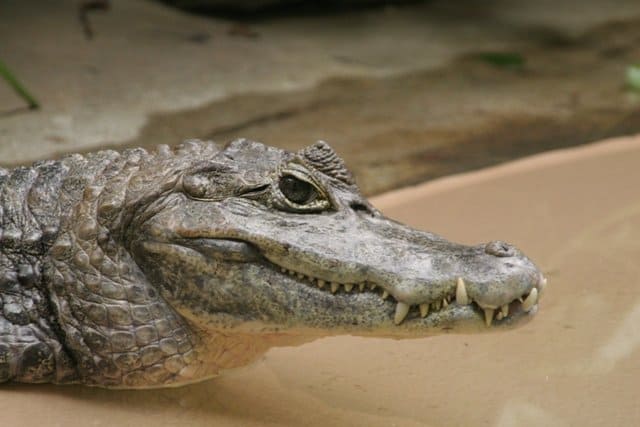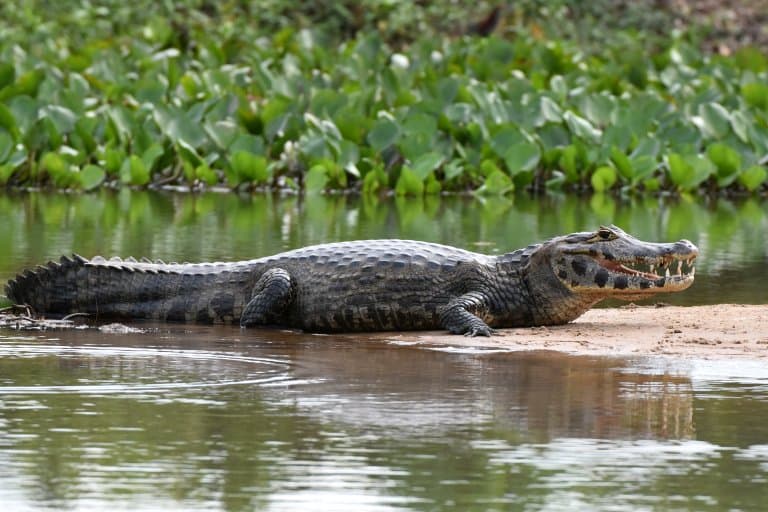In the diverse world of wildlife, the cayman animal holds a place of intrigue and fascination. Often overshadowed by their larger relatives, crocodiles and alligators, caymans are unique in their own right. Let’s dive into the world of this remarkable reptile and explore 10 facts about the cayman animal that you might not know.
1. Not Just One, But Several Species
The term ‘cayman animal‘ doesn’t refer to a single species but encompasses several species within the Caiman genus. These include the well-known spectacled caiman, the black caiman, and several other lesser-known species, each with unique traits and habitats.
2. The Spectacled Caiman: A Distinctive Appearance
Among the various species, the spectacled caiman is perhaps the most recognized. Named for the bony ridge between its eyes, which resembles spectacles, this cayman stands out for its distinctive facial feature.
3. Diverse Habitats Across the Americas
Cayman animals are predominantly found in Central and South America. They inhabit a range of freshwater environments, from slow-moving rivers and streams to lakes and swamps. Their adaptability to different water habitats is a testament to their resilience as a species.
4. They Camouflage Perfectly
One of the cayman animal’s most remarkable survival tactics is its ability to camouflage. Their dark, mottled skin blends seamlessly with the murky waters and vegetation of their habitats, making them adept at ambushing prey.
5. They Have A Diet that Reflects Their Habitat
The diet of a cayman animal largely depends on its size and habitat. While smaller species primarily feed on fish and invertebrates, larger caymans like the black caiman can take down larger prey, including mammals and birds.
6. The Unique Social Behavior of Caymans
Cayman animals exhibit interesting social behaviors, especially during the breeding season. They communicate through vocalizations and physical displays, which play a crucial role in their mating rituals and territorial claims.
7. The Significance of Temperature in Egg Incubation
The temperature at which cayman eggs are incubated determines the sex of the offspring. This temperature-dependent sex determination is a fascinating aspect of their reproductive biology and critical for the management and conservation of these species.
8. The Black Caiman: Among the Largest
The black caiman is one of the largest cayman species, with some individuals growing up to 5 meters (16 feet) in length. Its size and strength make it one of the top predators in its ecosystem, playing a vital role in maintaining the ecological balance.
9. Conservation Status: A Varied Picture
The conservation status of cayman animals varies by species. While some, like the spectacled caiman, are relatively abundant, others, such as the black caiman, have faced significant threats from hunting and habitat loss.
10. Cultural Significance in Indigenous Communities
In many regions where cayman animals are found, they hold significant cultural and economic importance, particularly in indigenous communities. They are often featured in folklore and mythology and are a source of food and materials.
The cayman animal, with its diverse species, intriguing behaviors, and ecological importance, is a fascinating subject in the world of reptiles. These facts only scratch the surface of understanding these incredible creatures. As we continue to learn more about cayman animals, we gain a deeper appreciation for their role in the natural world and the importance of their conservation.
Are Cayman Animal and Caiman Animal the Same?
The terms ‘Cayman animal’ and ‘Caiman animal’ often lead to confusion, leaving many to wonder if they refer to the same creature or different entities. Let’s delve into the world of these intriguing reptiles, exploring their similarities, differences, and unique characteristics.
Firstly, it’s essential to clarify the terminology. The confusion arises from the similarity in pronunciation and spelling. ‘Cayman’ is often used colloquially to refer to the same group of reptiles as ‘Caiman.’ However, ‘Caiman’ is the correct term used in zoology to describe a particular genus of reptiles.
What is Caiman?
Caimans are a group of reptiles belonging to the Alligatoridae family, native to Central and South America. They are close relatives of alligators and are part of the order Crocodylia, which also includes crocodiles and gharials. Caimans are characterized by their smaller size compared to their crocodilian cousins.

Image courtesy: https://a-z-animals.com/animals/caiman/
The Caiman genus comprises several species, including the spectacled caiman (Caiman crocodilus), the yacare caiman (Caiman yacare), and the black caiman (Melanosuchus niger), among others. Each species has distinct physical features and habitat preferences.
Caimans typically have a robust body, a strong tail, and a bony ridge that runs across their eyes, leading to the ‘spectacled’ appearance in some species. They vary in size, with some species like the black caiman reaching significant lengths.
Caimans inhabit a variety of freshwater environments such as rivers, lakes, swamps, and marshlands. Their distribution is mainly in the tropical and subtropical regions of the Americas. Their adaptation to these habitats plays a crucial role in their survival and hunting strategies.
Caimans are carnivorous, feeding primarily on fish, birds, small mammals, and invertebrates. Their hunting techniques involve stealth and power, using their aquatic prowess to ambush prey.
Can Caimans Reproduce?
Caiman females build nests where they lay eggs. The temperature of the nest determines the sex of the offspring, a phenomenon known as temperature-dependent sex determination. The mother guards the nest and helps the young to water once they hatch.
The Role of Caimans in the Ecosystem
Caimans play a vital role in their ecosystems as both predators and prey. They help maintain the balance by controlling fish populations and serving as a food source for other predators.
Clarifying the Confusion
In summary, the terms ‘Cayman animal’ and ‘Caiman animal’ refer to the same group of reptiles. The confusion is generally due to common mispronunciation or misspelling. Understanding this clarifies the identity of these fascinating and important reptiles.
Conclusion: A Fascinating Group of Reptiles Caimans, whether referred to as ‘Cayman’ or ‘Caiman,’ are a fascinating group of reptiles with a significant role in the biodiversity of their habitats. By exploring and understanding these creatures, we gain insight into the complex tapestry of life that exists in the wetlands of the Americas and the importance of preserving these incredible animals.
FAQs – Frequently Asked Questions
- What exactly is a cayman animal?
- A cayman animal refers to any member of the Caiman genus within the alligator family. These are medium to large-sized reptiles native to Central and South America, known for their semi-aquatic lifestyle and ability to adapt to various freshwater habitats.
- How many species of cayman animals are there?
- There are several species of cayman animals, including the well-known spectacled caiman, the black caiman, and other lesser-known species like the Yacare caiman. Each species varies in size, appearance, and habitat preferences.
- Where can one typically find cayman animals?
- Cayman animals are typically found in a variety of freshwater habitats across Central and South America. They inhabit rivers, lakes, swamps, and marshes, with each species adapted to specific environmental conditions within this range.
- What do cayman animals eat?
- The diet of cayman animals varies depending on their size and habitat. Generally, they feed on a diet of fish, invertebrates, birds, and small mammals. Larger species like the black caiman may hunt larger prey, including deer and capybaras.
- Are cayman animals endangered?
- The conservation status of cayman animals varies by species. While some species are abundant, others, such as the black caiman, have been threatened by hunting and habitat loss in the past. Conservation efforts have been instrumental in protecting these species and their habitats.
Image courtesy: https://factanimal.com/caiman/
